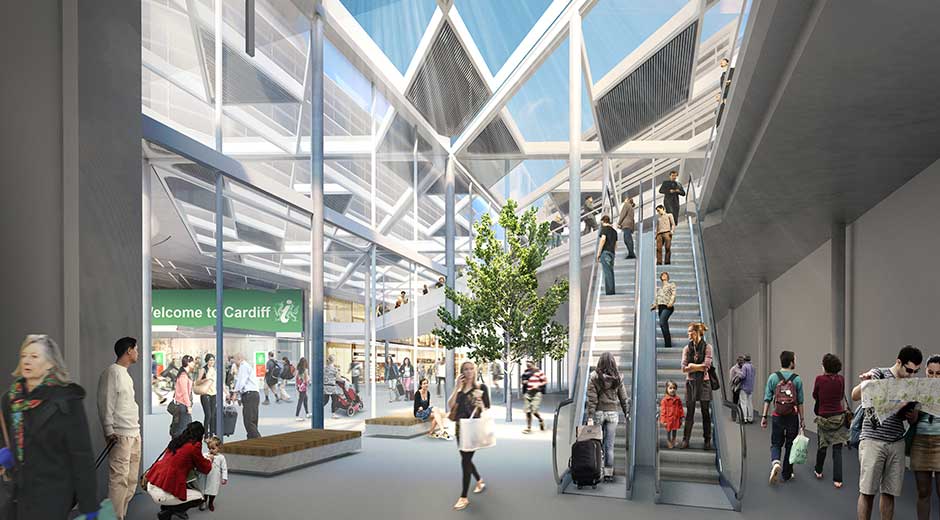Unlocking the Heart of the City
Define the vision • Identify issues and objectives, constraints and Opportunities • Engage with Stakeholders • Assess the context and best practice • Develop the Concept • Develop the Design • Establish the Delivery Strategy • Test the design • Refine the design
Cardiff Network
Cardiff is one of the UK’s largest cities and benefits from a strong connection to the rest of the country via the railway network. Cardiff Central Railway Station is the largest and busiest station in Wales and one of the major stations of the British rail network, offering 7 platforms and serving over one million passengers annually. Considering the high volume of people going through the station, the Masterplan proposal provides an urban layout that offers optimum people movement and accessibility to and from the station, and a coherent network that connects the station with the rest of the city.
A lively urban heart
Vibrant city spaces are predicated on two major qualities: density of users and diversity of activities. Edged by the Millennium Stadium, Cardiff ’s popular retail heart, and the busy Cardiff Central Station, this site has all the prerequisites needed to form a vital urban space and unlock a key part of Cardiff ’s centre.
The daily commuter movement, amenity destinations, and the stadium’s event activities means that this site is firmly in local residents’ mental map of the city. It is the gateway into Cardiff ’s social and cultural destinations, and is thus an inextricable part of its identity. Its past failure to serve as an inviting place demands a more nuanced, people centred approach.
The Masterplan proposal takes these vibrant surroundings into account and adapts the site as a stepping stone between them. The wide variety of users and amenities (leisure, work, evening relaxation) extends the hours this site is used beyond just the working day, and lends itself to possibilities of social activation – something which would add significantly to this part of Cardiff ’s sense of place, conviviality and safety.
“There is an art of relationship, just as there is an art of architecture. Its purpose is to take all the elements that go to create the environment … and to weave them together in such a way that the drama is released.”







